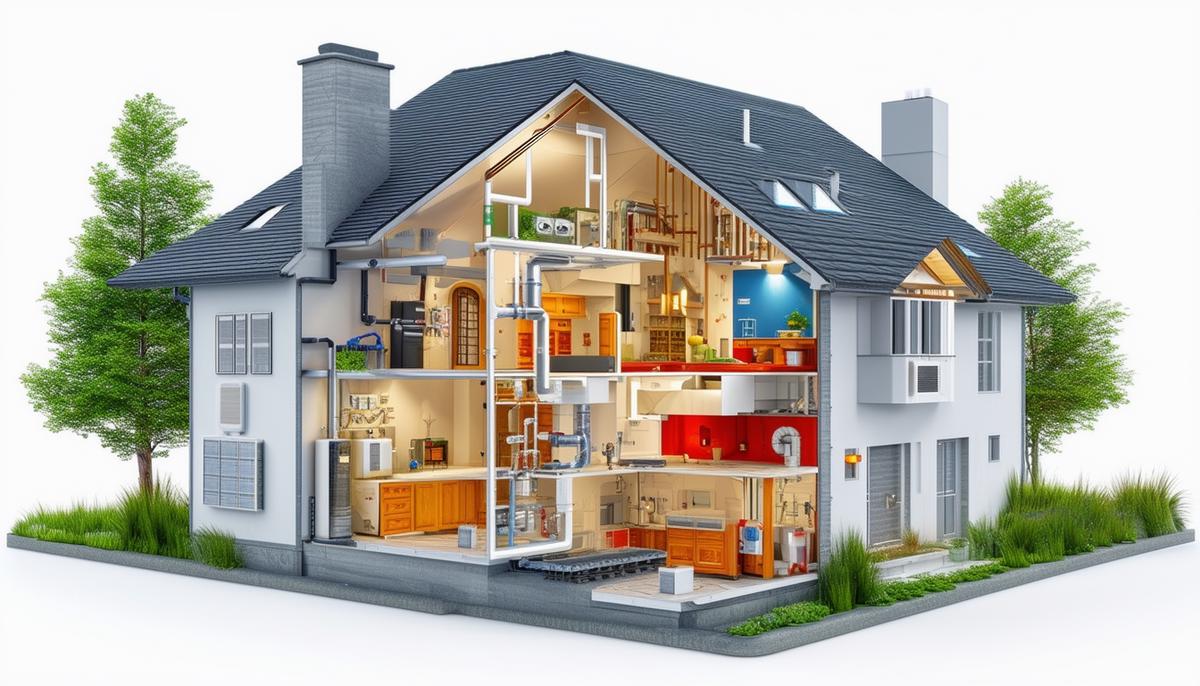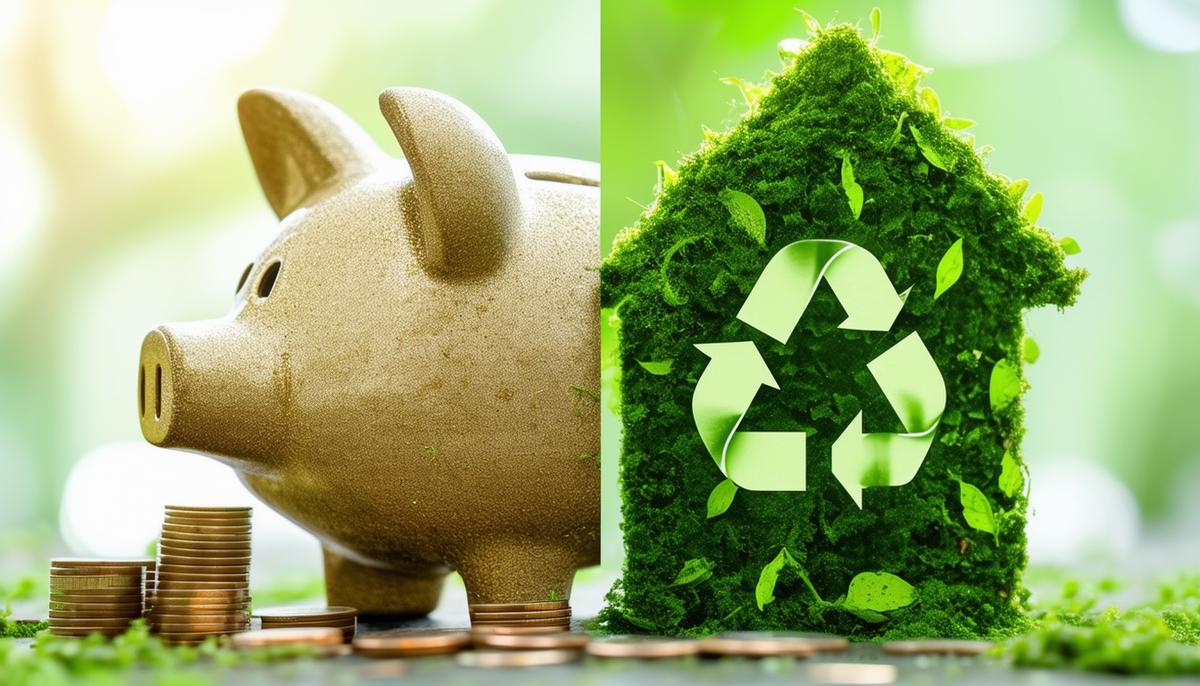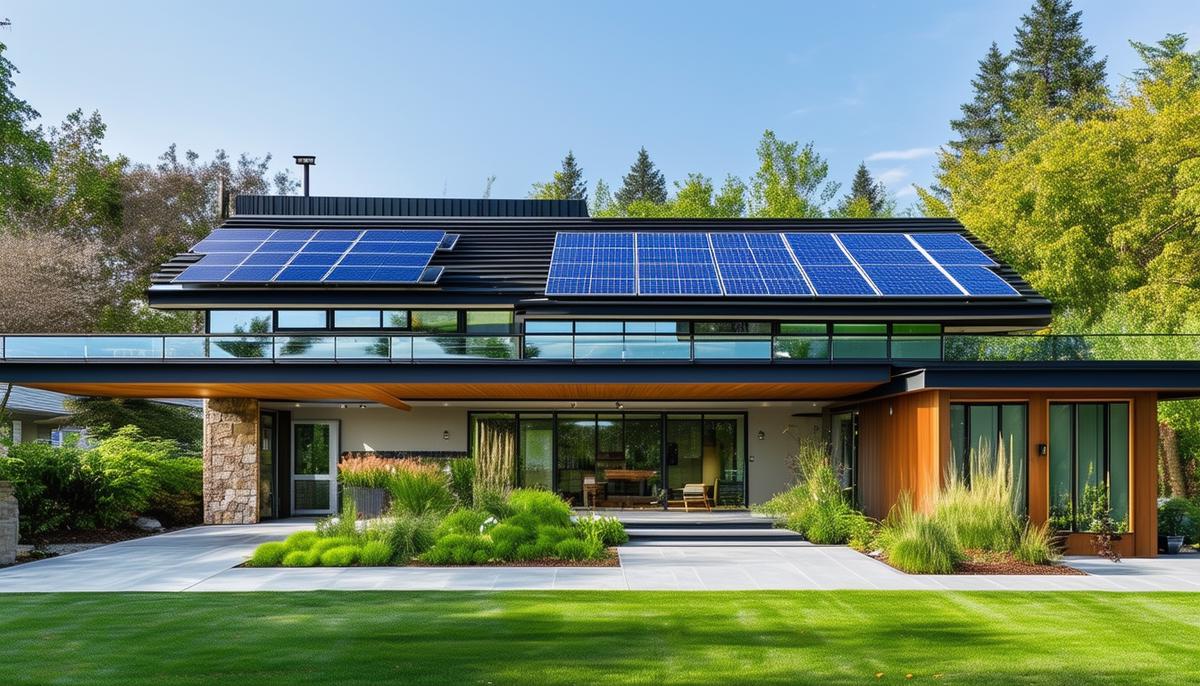Durability and Longevity
Green homes are built to last, saving you the headache and expense of constant repairs. They use durable materials and advanced construction practices that outperform traditional methods.
- Roofing options now boast warranties lasting up to 50 years, providing peace of mind and reducing maintenance needs.
- Recycled decking offers an environmentally friendly alternative that's tougher than traditional wood, resistant to pests, and doesn't require toxic treatments.
- Advanced framing techniques reduce wood waste and allow for thicker insulation, resulting in lower energy bills and improved comfort.
High-efficiency appliances further cut costs and conserve resources. These elements don't compromise on comfort or style. Green homes use clever design to ensure you live well while living sustainably. The absence of VOCs in paints and finishes improves indoor air quality, making spaces healthier.
Owning a green home is about enjoying a sturdy, low-maintenance living space that remains a sound investment for years to come.

Energy and Water Efficiency
Energy-efficient HVAC systems in green homes keep you comfortable year-round while minimizing energy usage. Properly sized systems prevent wasteful consumption and ensure maximum efficiency, like having a tiny, efficient powerhouse that maintains the perfect climate without breaking your bank account.
Water conservation is equally important. Low-flow plumbing appliances use just the right amount of water without sacrificing performance. These innovations save both the planet and your money, reducing those towering water bills.
Smart thermostats take energy efficiency a step further by learning your habits and adjusting the temperature accordingly. It's like having a climate control assistant that ensures your home is cozy when you're there and energy-efficient when you're not.
Green homes blend comfort with conscience, allowing you to live smarter while going easier on Mother Earth and your monthly bills.

Health and Indoor Air Quality
Green homes are designed to be sanctuaries of well-being, with a focus on health and indoor air quality. Non-toxic building materials, including low-VOC paints and adhesives, ensure your indoor spaces aren't silently undermining your health.
Modern ventilation and air-filtration systems work tirelessly to expel indoor pollutants and refresh your home with clean air. They also regulate indoor humidity, helping to keep mold and allergens at bay.
Benefits of Improved Indoor Air Quality:
- Fewer respiratory issues and allergy flare-ups
- Uplifted moods
- Boosted concentration
- Enhanced productivity
Long-term, reduced exposure to harmful chemicals and irritants may lower the risk of more serious health concerns. Embracing these features isn't just about being eco-friendly; it's about nurturing your space to support a healthier lifestyle.

Economic and Environmental Impact
Green homes offer a dual benefit: they're good for your wallet and the planet. Thanks to lower operational costs and energy-efficient features, these homes can significantly reduce utility bills. Solar panels and efficient appliances contribute to more affordable living.
But the financial perks don't stop there. Green features can boost your property's value, as buyers are often willing to pay more for homes with lower ongoing costs. It's like your home becomes an appreciating asset, rewarding you at every turn.
"Buildings account for 39 percent of total energy use, 12 percent of the total water consumption, 68 percent of total electricity consumption and 38 percent of the carbon dioxide emissions in the United States."
On a larger scale, green homes play a crucial role in battling carbon emissions and resource depletion. Each energy-efficient solution and reduction in resource consumption moves us closer to sustainable living. This eco-conscious approach fuels sustainable development as the world shifts towards more responsible living.
Investing in a green home means elevating your lifestyle, enriching your finances, and playing a vital role in creating a greener, healthier tomorrow. It's a smart approach that sets the stage for a future that's both economical and ethical.

Embracing a greener lifestyle through sustainable home ownership is an enriching experience. It's about creating a space that nurtures well-being and financial stability while contributing to a brighter future for our planet.
- U.S. Environmental Protection Agency. Green Building. 2018.
- World Green Building Council. The Benefits of Green Buildings. 2018.
- U.S. Green Building Council. LEED v4 for Building Design and Construction. 2019.

